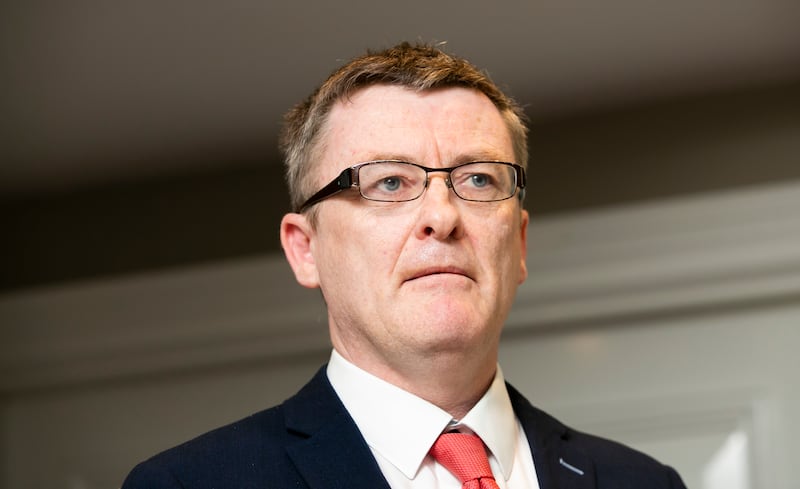There have been two outstanding trends in political support since the last general election. The first has been the rise of Sinn Féin. The second has been its fall.
A month away from local and European elections and, at most, 10 months from a general election, how is the party dealing with the downturn in support, what is driving the decline – and what does it mean for its prospects for power?
When Sinn Féin won the largest share of the votes in the 2020 general election, it was hard to know who was more surprised: the party itself or its opponents.
Only eight months earlier, Sinn Féin had been monstered at the local and European elections, losing two MEPs and half its council seats.
READ MORE
Nobody was prepared for what would come after the 2020 election: a huge surge in support for Sinn Féin that would, at one point, make the party’s leadership of the next government seem inevitable.
Putting numbers on that, at the local elections in 2019, Sinn Féin won less than 10 per cent. At the general election the following year, it jumped to nearly 25 per cent.
By the middle of 2022, the party was at an astonishing 36 per cent in The Irish Times/Ipsos poll. With an alliance of traditional working class and younger middle class supporters attracted by its left-populist and progressive messages, polling averages were firmly in the mid-30s.
But something started to change after that, and the numbers began to slip.
That trend accelerated throughout 2023. The most recent Irish Times/Ipsos B&A poll in February had the party at 28 per cent; last month, a Red C poll put them at 25 per cent. There was some good news for the party in a Sunday Independent/Ireland Thinks poll today, which had Sinn Féin at 29 per cent, a gain of three points on the last such poll.
Publicly the party plays down the polls and wants to talk about “change”. Privately, there is significant worry. How could there not be? No matter what they say, no politician ignores the opinion polls.
So what’s going on? What has driven the fall in Sinn Féin support since 2022? And what does the party intend to do about it?
First, the rise. Most observers, inside and outside of the party, draw a strong link between the prominence of the housing issue in Irish politics and the surge in support for Sinn Féin after the 2020 election. Central to this was the performance of the party’s housing spokesman, Eoin Ó Broin.
Personable, thoroughly in command of the brief and with ready access to the media, Ó Broin had a simple message that resonated with growing numbers of people who felt locked out of the housing market and despaired of ever owning, or even occupying, their own home: the Government needed to help renters in the short term and build more social and affordable housing in the medium term.

The market, he argued, was failing young people and that was the Government’s fault.
“The single biggest issue coming up on the doors is housing right across the country. In particular, the lack of affordable housing for working people,” Ó Broin told The Irish Times.
There have been other factors behind the party’s rising popularity. For the first time Sinn Féin was the main party of opposition. Mary Lou McDonald faced the Taoiseach every week across the floor of the Dáil. Sinn Féin spokespeople became the go-to opponents of the Government, as the rest of the Opposition got steamrollered by their juggernaut.
Meanwhile, factors that had limited Sinn Féin support in the past – memories of the party’s link to the IRA and ancestral party loyalties to the established parties – were diminishing.
By mid-2022 the conventional wisdom was that Sinn Féin leadership of the next government was inevitable – the only question was whether that would be with other left-wing parties in a historic left-wing coalition, or with Fianna Fáil.
At the end of 2022, one bookie had Mary Lou McDonald at 2/7 to be the next taoiseach. Sinn Féin TDs had long since been told to preface their statements with phrases such as “When Sinn Féin is in government” and “A Sinn Féin government would ...” Now it made sense.
But then, the fall.
On immigration, Sinn Féin was getting caught between its populist wing and its progressive wing
All this feeling of a fait accompli overlooked the dynamic nature of politics: things do not stay the same. In addition, while support for the Coalition Government had fallen since the general election, it had not collapsed. It was actually reasonable by the standards of governments in the middle of their term of office.
“I find it difficult to see any party sustaining itself over 25 per cent for any period of time,” says Aidan Regan, an associate professor in UCD.
As 2022 turned into 2023, something else was beginning to happen too: immigration had become a political issue. More than 100,000 Ukrainian refugees arrived into a country where accommodation was already in short supply. To this figure was now added increasing numbers of asylum seekers from elsewhere. Previously, only a few thousand a year had arrived. Now, with the ending of Covid restrictions, refugees were again on the move. More than 20,000 are expected this year.
As protests sprang up around centres for asylum seekers, far-right groups targeted Sinn Féin, dubbing them “traitors” who were betraying their own communities.
But concern about immigration was not limited to the relatively small far right; more mainstream politicians were also giving voice to communities’ concerns about services and accommodation.
“I get it on the doors all the time – we need a cap on numbers. I have to say that we can’t do that,” says one rural TD. The party was now constrained by the fact that it was likely to be in government.
Surveys showed that Sinn Féin’s base was considerably more sceptical about immigration than other parties. But at the same time, many of the party’s newer, younger, more liberal and urban supporters were concerned about migrants’ rights. Sinn Féin was getting caught between its populist wing and its progressive wing.
On the ground, meanwhile, some Sinn Féin TDs were working to head off outright opposition to asylum seekers. One TD explains how a series of public and private meetings and individual conversations gradually saw opposition to a local asylum centre wither away. But there was little or no political pay-off for this.
Ó Broin says that while the issue of “irregular migration” is raised on the doorsteps, there are varying views about it.
“Most people just want to know what is happening in their own community and whether the resources will be provided for both the host community and the new arrivals,” he says.
“What is angering people most is the absence of a plan from Government and their abject failure to talk to people, listen to their concerns and provide meaningful responses.”

Sinn Féin’s Waterford TD David Cullinane sees a special responsibility for Sinn Féin in the working-class areas that have become, over the past decade, the party’s heartlands.
“That’s why it’s so important for Sinn Féin to challenge the bad faith actors who do not have the solution – to challenge their misinformation,” he says.
“Our job is to ensure that bad faith actors don’t poison working-class communities.”
Privately, however, many activists were rattled, and there have been extensive discussions internally about it. In recent months the party’s most senior adviser in Northern Ireland, Stephen McGlade, has relocated from Stormont to Leinster House, though party sources deny this is a response to the falling poll numbers and say it is more about preparing for government in the South.
The party leadership still seems unsure on immigration, stressing both the need to toughen up the system but also the need to welcome refugees.
“We were a bit all over the place,” says one TD.
For now, the party is moving towards the same destination that the Government is. “If people are entitled to refugee status then they should be welcome to stay here and they should be looked after,” says Cullinane. “But we need to return unsuccessful applicants.”
But how will this go down with the party’s progressive voters? Aidan Regan of UCD is sceptical. “If they respond by getting harder on immigration, they are in danger of losing younger urban voters to the Social Democrats,” he says.
“The more urban left-leaning vote – that’s where a lot of their growth has come ... Centre-left parties, if they harden on immigration, they tend not to benefit electorally.”
[ Sinn Féin is now out of touch with its own supporters, claims Aontú leaderOpens in new window ]
In other words, the new message about being against open borders might have reassured the populists, but has alarmed the progressives.
“They’re not going to be able to take a position on immigration that will win votes of people who are voting on the issue of immigration,” says Regan.
This echoes the feelings of some TDs who have been knocking on doors lately. One says that when they look at the Electoral Register, they find that the people who are most vociferously anti-immigration on canvasses are either not registered to vote, or didn’t vote in the last election.
“They’re never going to vote for us,” the TD says.
But TDs and activists who are on the doors suggest the challenge for Sinn Féin is not just about immigration; it’s about going beyond just criticising the Coalition and about presenting a viable alternative plan for government that will improve people’s lives.
“Immigration is coming up – but so is the lack of disability services, supports for carers, the lack of respite and home help, housing, rents – these are things you hear more often on the doors,” says Pa Daly, Sinn Féin TD for Kerry.
“People who think we will make a difference in housing, health and local services – they’re the people who might vote for us.”
- Sign up for push alerts and have the best news, analysis and comment delivered directly to your phone
- Find The Irish Times on WhatsApp and stay up to date
- Listen to our Inside Politics podcast for the best political chat and analysis













